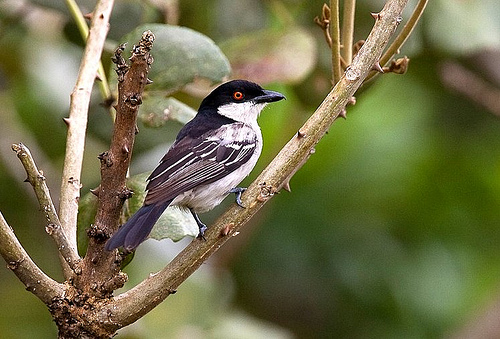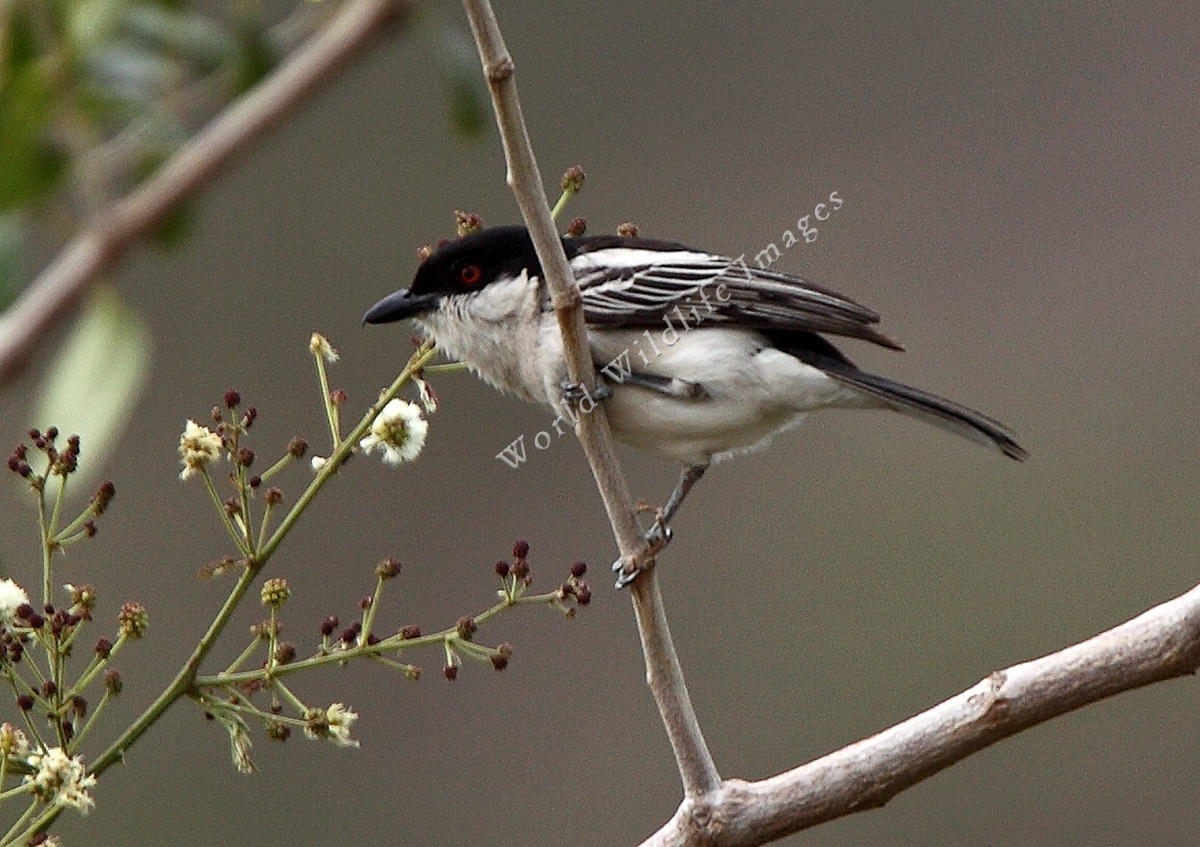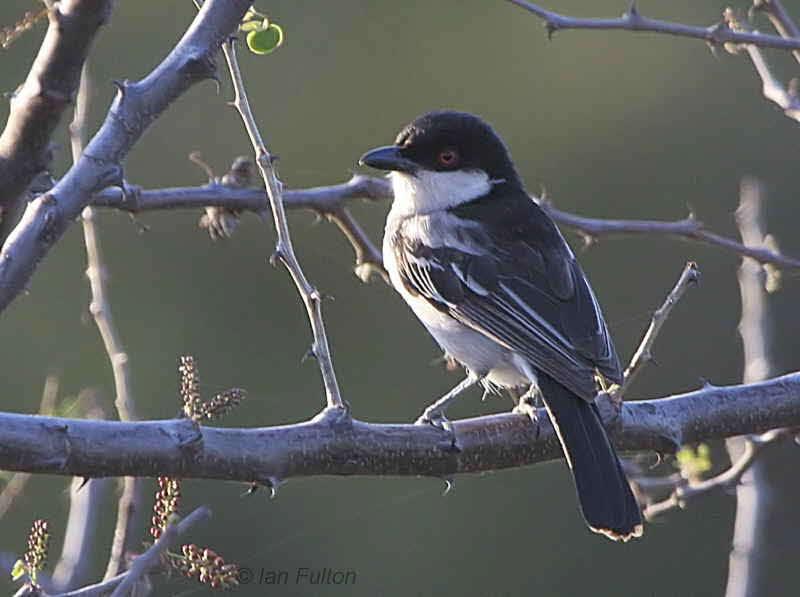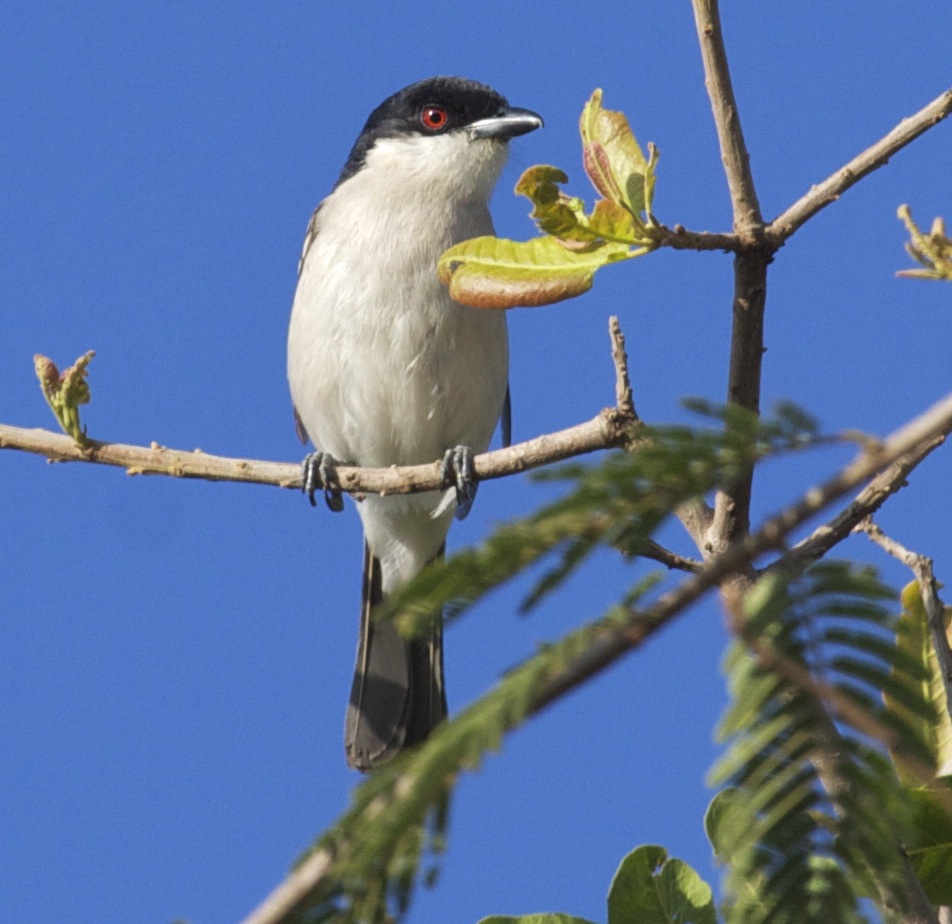
Dryoscopus gambensis
SUBFAMILY
Malaconotinae
TAXONOMY
Lanius gambensis Lichtenstein, 1823, Senegambia. taxonomy
still unclear; up to five races described; variation relatively well
marked, but only in color of underparts and upperparts of
females. Appears to be very close both to Pringle’s puffback
(D. pringli), an uncommon resident in eastern Africa, and to
the black-backed puffback (D. cubla), which is widespread south
of the equator.
OTHER COMMON NAMES
English: Gambian puffback-shrike; French: Cubla de Gambie;
German: Gambia-Schneeballwьrger; Spanish: Obispillo Comъn.
PHYSICAL CHARACTERISTICS
7–7.5 in (18–19 cm); 0.95–1.37 oz (27–39 g). The red-eyed
male has mainly glossy black upperparts, but scapulars, rump,
wing-coverts, and edges of wing-feathers are pale gray; underparts
are creamy white. Female is duller with orange eyes,
gray-brown upperparts, and mainly creamy reddish underparts;
the intensity of these colors varies with races. Young
birds are similar to the adult female, but have reddish tips on
upperparts and brown eyes. In the eastern race erythrea, the female
strongly resembles the male; her upperparts are, however,
dark brown instead of black, and her underparts are generally
creamier.
DISTRIBUTION
Most common puffback north of the equator; found in a broad
belt stretching from Senegambia to Eritrea and Ethiopia; almost
absent from the Horn. Nominate from Senegal to
Cameroon; most distinct race, erythrea from eastern Sudan to
northwestern Somalia.
HABITAT
All types of savanna woodland and areas with large trees, including
gardens; avoids closed forests. In Eritrea occurs up to
about 4,900 ft (1,500 m).
BEHAVIOR
Generally solitary or occurring in pairs, keeping to the tree
canopy. Only relatively easily spotted and seen for a few seconds
in breeding season when very demonstrative. Males fly
from tree to tree with back and rump feathers fluffed out.
Thought to be sedentary, but local movements are possible.
FEEDING ECOLOGY AND DIET
Arthropods, mainly insects and particularly caterpillars gleaned
from foliage.
REPRODUCTIVE BIOLOGY
Territorial and probably monogamous. Little known. Few
nests found; generally high up in trees; plastered with spider
web. Appears to breed in any month of the year.
CONSERVATION STATUS
Not threatened.
SIGNIFICANCE TO HUMANS
None known.
Photo Gallery of - Northern puffback




 Animalia Life
Animalia Life